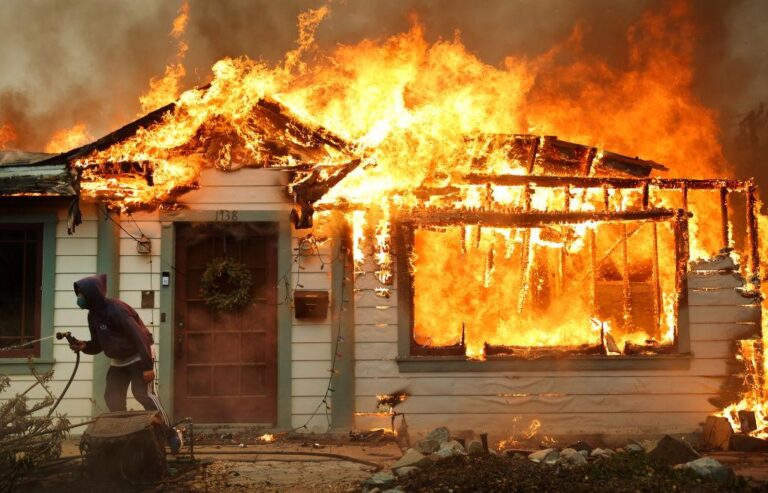Canada is facing an unprecedented wildfire season, with the country on track to surpass previous records for acreage burned and firefighting efforts. According to the latest reports from E&E News, this year’s blistering heatwaves and dry conditions have fueled relentless blazes across multiple provinces, overwhelming resources and prompting widespread evacuations. As communities grapple with the escalating threat, experts warn that the intensity and frequency of wildfires are likely to become the new normal amid growing climate challenges. This article delves into the factors driving the crisis, the response from authorities, and the implications for Canada’s environment and public safety.
Canada Faces Unprecedented Wildfire Threat Amid Rising Temperatures
Canada is currently grappling with a wildfire season unlike any in its history, as soaring temperatures and prolonged dry spells create conditions ripe for extensive blazes. Firefighters are battling an increasing number of large-scale fires that are rapidly consuming vast stretches of forests, threatening communities, wildlife habitats, and critical infrastructure. Experts warn that this trend is not only disrupting ecosystems but also placing immense pressure on emergency response resources across multiple provinces.
Key factors fueling the crisis include:
- Unprecedented heatwaves contributing to drier vegetation.
- Extended drought periods weakening natural fire barriers.
- Shifts in wind patterns accelerating fire spread.
- Increased human activity near forested regions.
| Province | Fires to Date | Area Burned (hectares) | Status |
|---|---|---|---|
| British Columbia | 312 | 1,150,000 | Active |
| Alberta | 224 | 800,000 | Contained |
| Ontario | 198 | 600,000 | Active |
| Quebec | 150 | 450,000 | Active |
Communities Brace for Impact as Fire Season Accelerates Across Provinces
Wildfire activity across Canadian provinces is escalating at an unprecedented rate, with multiple regions reporting an early surge in blazes. Emergency services are stretched thin as communities near vulnerable forested areas prepare for potential evacuations and road closures. A combination of prolonged drought, heatwaves, and wind patterns have fueled the rapid spread of fires, heightening concerns among residents and officials alike. Firefighting teams have mobilized additional resources, including aerial support and reinforcements from neighboring provinces, to contain the growing number of incidents.
Provincial authorities have issued a series of alerts emphasizing readiness and prevention efforts. Key factors contributing to this dangerous trend include:
- Extended dry spells reducing natural moisture levels
- Increase in outdoor fire-related activities during summer months
- Climate change intensifying forest vulnerability
The following table highlights the current wildfire statistics across affected provinces:
| Province | Active Fires | Area Burned (ha) | State of Emergency |
|---|---|---|---|
| British Columbia | 45 | 18,500 | Yes |
| Alberta | 37 | 12,200 | No |
| Ontario | 25 | 7,800 | Partial |
Experts Call for Enhanced Fire Management and Increased Funding to Mitigate Risks
In light of the escalating wildfire threats engulfing Canada this season, leading authorities and environmental experts are urging policy makers to prioritize comprehensive fire management strategies. They emphasize the necessity of bolstering both prevention and rapid response efforts through cutting-edge technologies and enhanced inter-agency collaboration. Key recommendations include:
- Expanded early-warning systems using AI-driven fire detection tools to ensure faster containment.
- Increased community engagement programs focusing on fire preparedness and evacuation plans.
- Strengthened forest management practices that reduce fuel load through controlled burns and vegetation thinning.
Financial backing remains a pivotal factor in implementing these recommendations effectively. Experts call for a substantial increase in federal and provincial funding allocations aimed at wildfire mitigation efforts. Below is a simplified overview of proposed funding shifts compared to current budgets:
| Category | Current Budget (Millions CAD) | Proposed Increase (%) | Projected Budget (Millions CAD) |
|---|---|---|---|
| Firefighting Equipment | 150 | 40 | 210 |
| Community Preparedness | 80 | 60 | 128 |
| Research & Development | 45 | 75 | 78 |
| Forest Management | 110 | 50 | 165 |
These financial enhancements, paired with strategic policy adjustments, are deemed essential to reduce the devastating impacts of wildfires and protect vulnerable ecosystems and communities across Canada.
In Conclusion
As Canada faces a wildfire season poised to break historic records, the implications extend beyond immediate environmental and public safety concerns. The growing frequency and intensity of these fires underscore the urgent need for enhanced preparedness, adaptive resource management, and comprehensive climate policies. Monitoring developments closely will be essential as authorities and communities navigate the challenges ahead, highlighting the critical intersection of climate change and emergency response in shaping Canada’s future.




